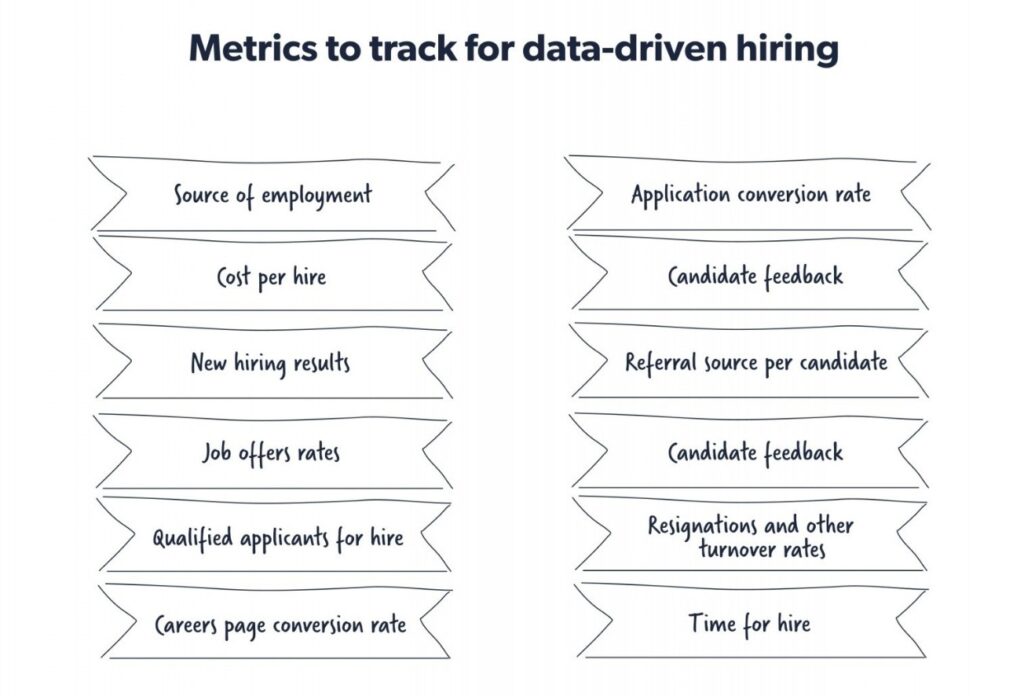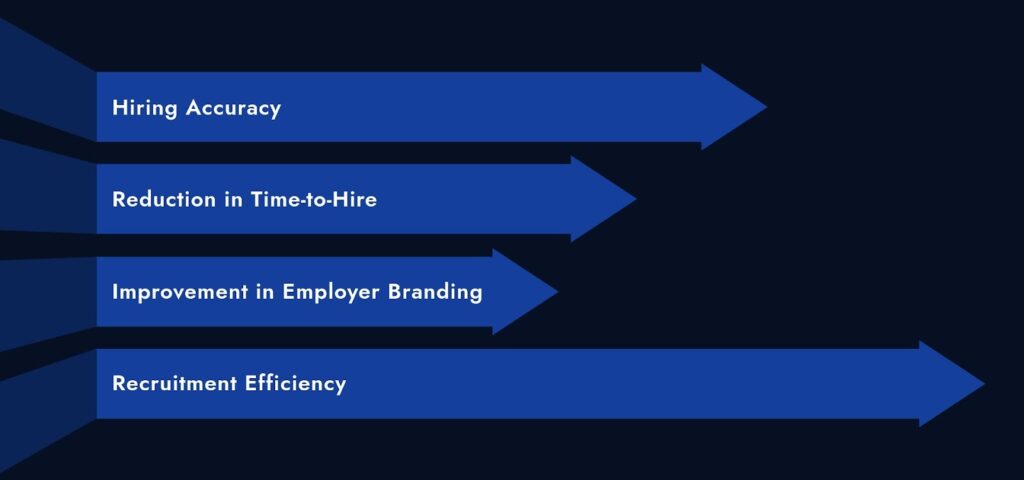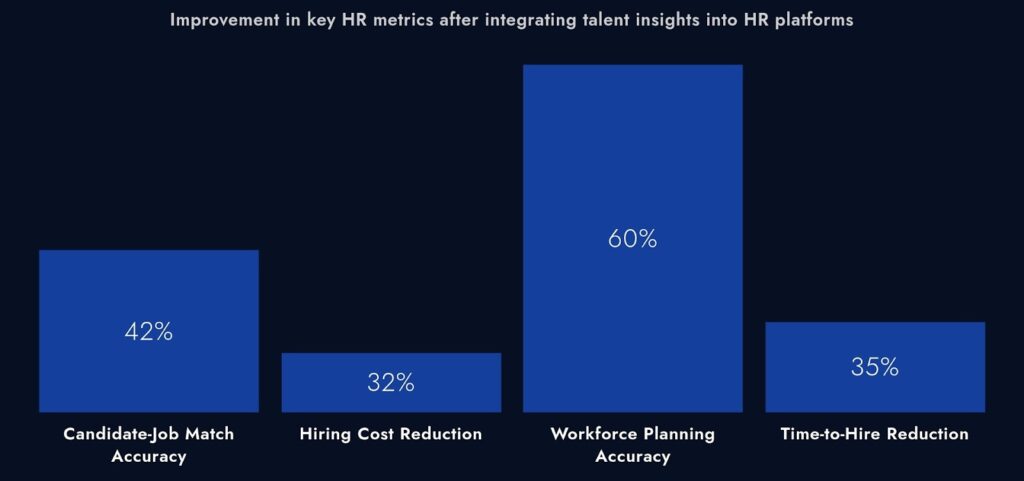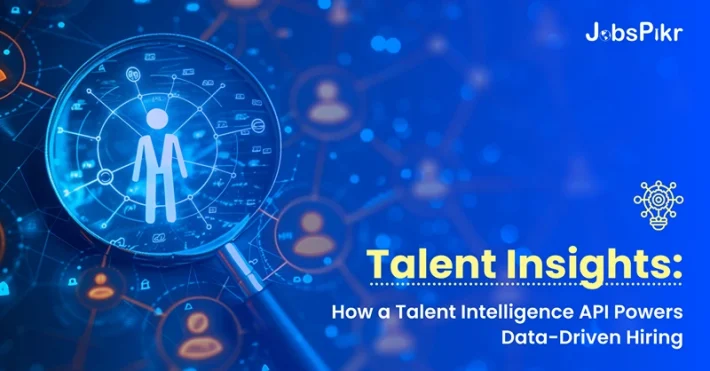The hiring landscape is rapidly evolving, with businesses shifting from traditional recruitment methods to data-driven hiring strategies. Organizations that leverage talent insights gain a competitive advantage in workforce planning, talent acquisition, and retention. By utilizing a Talent Intelligence API, HR tech companies, HR analysts, and recruitment data providers can integrate real-time workforce intelligence into their hiring systems to make more informed decisions.
According to a LinkedIn Talent Trends Report, 74% of HR professionals believe that data-driven hiring enhances recruitment efficiency and improves workforce planning. Additionally, a McKinsey study found that businesses using Talent Intelligence APIs experience a 40% increase in hiring accuracy and a 35% reduction in time-to-hire.
This article explores the role of talent insights, how a Talent Intelligence API enhances workforce planning, the benefits of integrating talent insights into HR platforms, and how JobsPikr’s Talent Intelligence API enables modern hiring solutions.
What Are Talent Insights? and Why Do They Matter in Hiring?
What Are Talent Insights?
Talent insights refer to data-driven analytics that help HR teams understand labor market trends, skill availability, hiring demands, and workforce movements. These insights provide real-time intelligence on industry hiring patterns, allowing businesses to optimize their recruitment strategies.
Talent insights are derived from various sources, including:
- Job postings and hiring data across industries.
- Workforce movement and employee transitions.
- Salary benchmarks and compensation trends.
- Geographic distribution of talent and hiring hotspots.
A Harvard Business Review report found that companies using talent acquisition insights achieve a 25% reduction in recruitment costs and 20% improvement in candidate quality.

How Talent Insights Improve Hiring Efficiency?
Companies integrating real-time talent intelligence into their recruitment processes can:
- Identify emerging job roles and skill gaps, ensuring they hire proactively.
- Benchmark salaries to attract and retain top talent.
- Analyze competitor hiring trends to refine workforce strategies.
- Optimize workforce distribution, ensuring the right talent is in the right place at the right time.
A Gartner workforce analytics study found that businesses leveraging talent intelligence experience a 50% improvement in recruitment efficiency.
How a Talent Intelligence API Optimizes Workforce Planning?
A Talent Intelligence API allows HR tech platforms to integrate real-time labor market intelligence into their systems. By automating workforce analytics, businesses can track hiring trends, industry demand, and candidate availability, improving their long-term recruitment strategies. With access to real-time labor market data, organizations can predict hiring needs, optimize resource allocation, and improve workforce planning.
The ability to forecast hiring trends and labor shortages gives companies a proactive recruitment advantage. Instead of relying on outdated hiring data, businesses using a Talent Intelligence API can identify emerging job roles, skill shortages, and workforce shifts. This enables HR teams to adapt recruitment strategies in real-time based on evolving talent demand.
A Deloitte HR Tech Survey revealed that 80% of businesses implementing Talent Intelligence APIs experienced higher recruitment precision and faster hiring cycles. This is particularly beneficial in industries experiencing rapid changes, such as technology, healthcare, and finance, where hiring demand can fluctuate significantly based on economic conditions.
Key Benefits of a Talent Intelligence API for Workforce Planning…
- Real-Time Talent Availability Data
- Allows companies to access live data on job openings, skill shortages, and workforce mobility.
- Helps recruiters source candidates faster by targeting talent-rich locations.
- Enables organizations to assess which regions have high workforce supply and adjust recruitment accordingly.
- Data-Backed Hiring Decisions
- Provides AI-powered candidate-job matching, reducing hiring errors.
- Enhances workforce allocation strategies by predicting future hiring demands.
- Ensures companies make strategic workforce investments based on labor market trends.
- Competitor Hiring Insights
- Tracks job postings, hiring patterns, and salary trends from competitors.
- Helps businesses adjust compensation strategies to remain competitive.
- Provides insights into which skills are most in-demand among competitors.
- Predictive Analytics for Hiring Trends
- Uses historical workforce data to forecast hiring trends and labor shortages.
- Helps businesses adjust recruitment strategies proactively.
- Identifies long-term workforce trends to support succession planning and leadership hiring.
A Forrester research report found that organizations using Talent Intelligence APIs experience 30% faster hiring cycles and 20% improved candidate engagement. By leveraging real-time insights, businesses can optimize workforce management, reduce hiring risks, and improve overall recruitment success rates.

Benefits of Integrating Talent Insights into HR Systems
HR tech companies and recruitment platforms that integrate talent insights into their hiring systems gain enhanced recruitment capabilities. Data-driven insights improve candidate sourcing, job-matching algorithms, and hiring efficiency. Automating talent analytics within HR platforms ensures that recruitment teams can focus on strategy and execution, rather than spending excessive time on manual data collection and analysis.
A PwC HR Tech study found that companies using AI-driven talent insights in HR platforms saw a 42% increase in candidate-job match accuracy. With AI-enhanced job-matching algorithms, recruiters can automatically identify top candidates, ensuring higher hiring success rates.
How Talent Insights Improve HR Platform Functionality?
- Better Candidate Matching: AI-driven recommendations ensure higher-quality candidate-job pairings. With real-time job and skill matching, recruiters can reduce time-to-hire by 35%.
- Salary Benchmarking Tools: Enables HR teams to offer competitive salaries based on market intelligence. Salary insights help businesses attract top talent and improve employee retention.
- Hiring Demand Forecasting: Predicts future talent shortages, allowing recruiters to adjust hiring pipelines. This prevents last-minute workforce shortages and ensures business continuity.
- Industry-Specific Hiring Trends: Provides insights into which job roles are growing or declining. HR teams can align recruitment strategies with market needs, ensuring that they hire for the future, not just the present.
- Improved Workforce Diversity & Inclusion: Data-driven talent intelligence helps businesses track diversity hiring trends, enabling them to build inclusive and well-balanced teams.
A LinkedIn HR Innovation Report found that companies that leverage real-time talent insights in their HR systems experience a 60% improvement in workforce planning accuracy. Additionally, companies using AI-powered workforce analytics see a 32% reduction in hiring costs, making data-driven HR platforms a must-have for modern recruitment teams.

How JobsPikr’s Talent Intelligence API Helps in Modern Hiring?
JobsPikr provides an AI-driven Talent Intelligence API that enables HR tech providers, talent intelligence firms, and workforce analysts to access real-time talent insights. By leveraging JobsPikr’s API, businesses gain access to structured job market intelligence, workforce trends, and hiring analytics.
Key Features of JobsPikr’s Talent Intelligence API:
- Comprehensive Talent Market Insights: Tracks global hiring patterns, workforce movements, and job demand.
- AI-Powered Candidate Insights: Enhances candidate-job matching with skill-based analytics.
- Competitive Hiring Intelligence: Monitors industry hiring trends and salary benchmarks.
- Custom API Integration: Offers flexible integration with HR platforms, ATS systems, and recruitment dashboards.
Business Impact of JobsPikr’s Talent Intelligence API:
- 40% improvement in recruitment accuracy through data-backed hiring strategies.
- 35% faster hiring cycles, reducing time-to-fill job vacancies.
- 30% increase in employer branding effectiveness due to competitive hiring insights.
A Statista workforce study found that businesses that integrate JobsPikr’s Talent Intelligence API experience higher recruitment efficiency and improved hiring success rates.
Conclusion
As hiring becomes increasingly data-driven, integrating talent insights into recruitment processes is no longer optional—it is essential for maintaining a competitive advantage. A Talent Intelligence API provides real-time workforce analytics, allowing businesses to optimize hiring strategies, improve candidate sourcing, and enhance workforce planning.
Organizations that leverage AI-driven talent intelligence experience higher recruitment efficiency, reduced hiring risks, and improved workforce management. With customizable API solutions, businesses can tailor talent data analytics to their hiring needs.
For companies looking to integrate high-quality talent insights into their hiring strategies, JobsPikr’s Talent Intelligence API offers AI-powered, real-time talent intelligence solutions to enhance recruitment efficiency.Sign up on JobsPikr today to access real-time Talent Intelligence API solutions and transform your hiring process!



